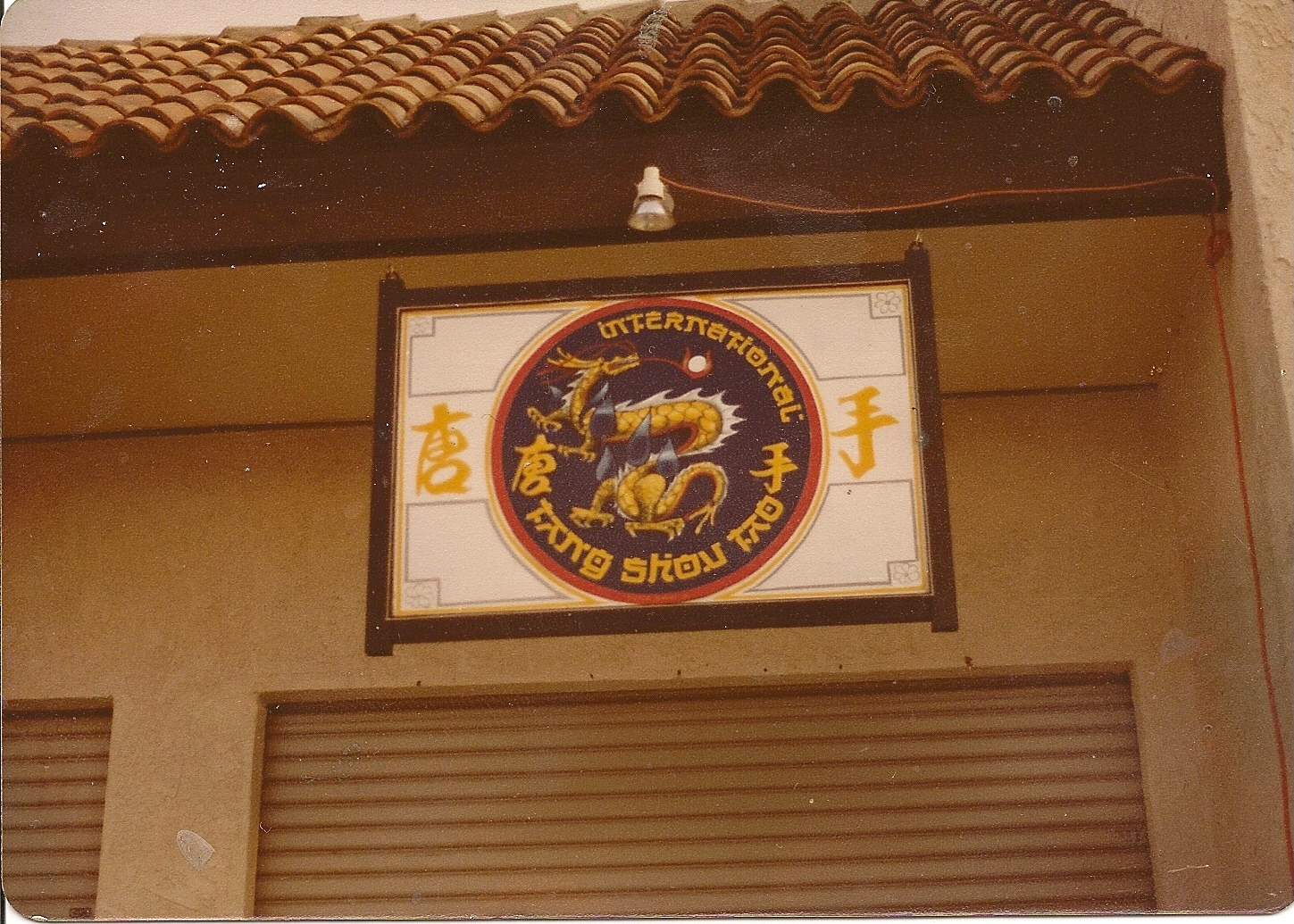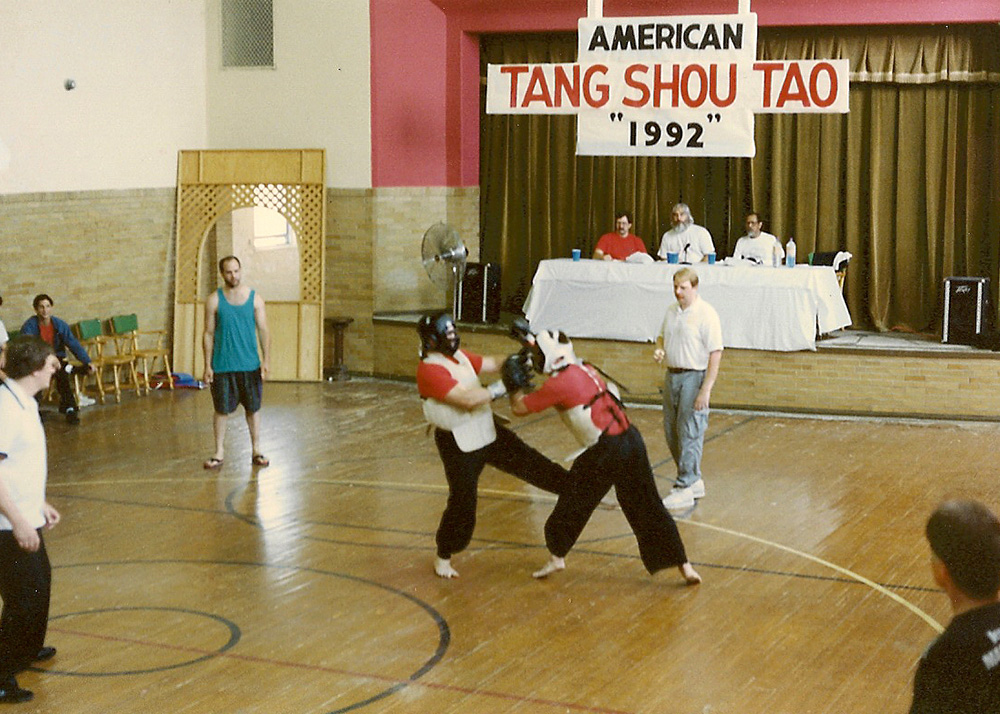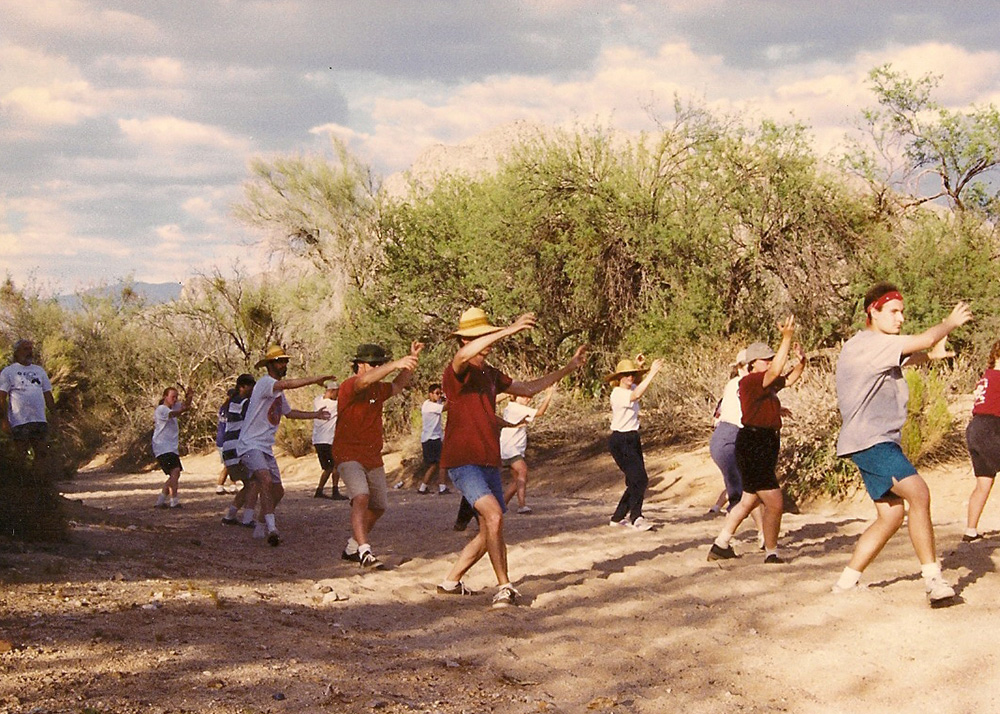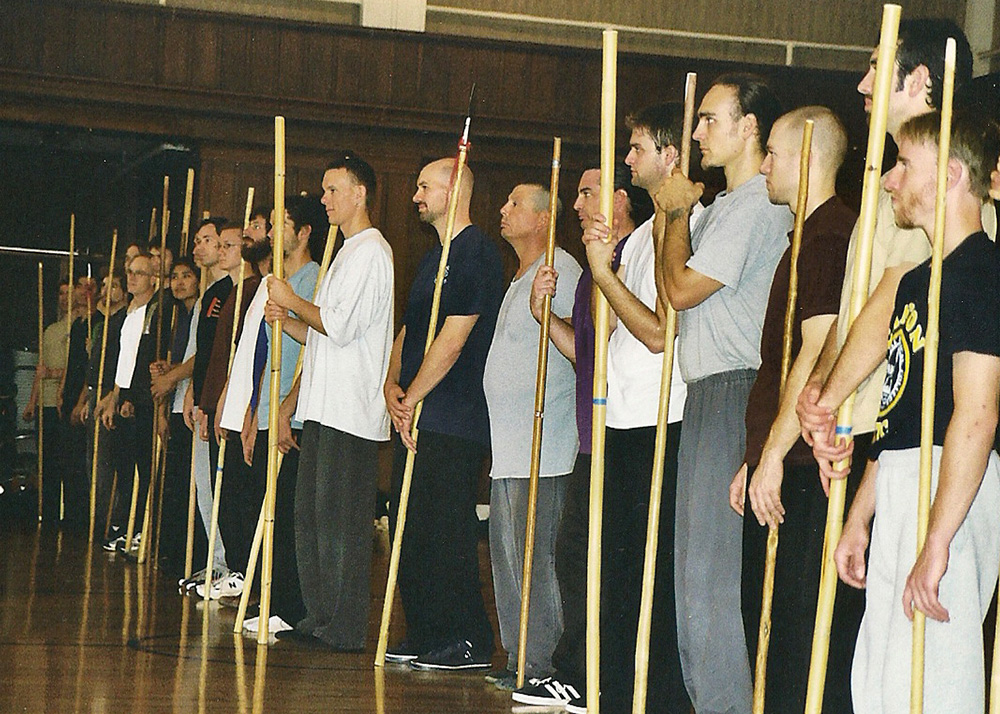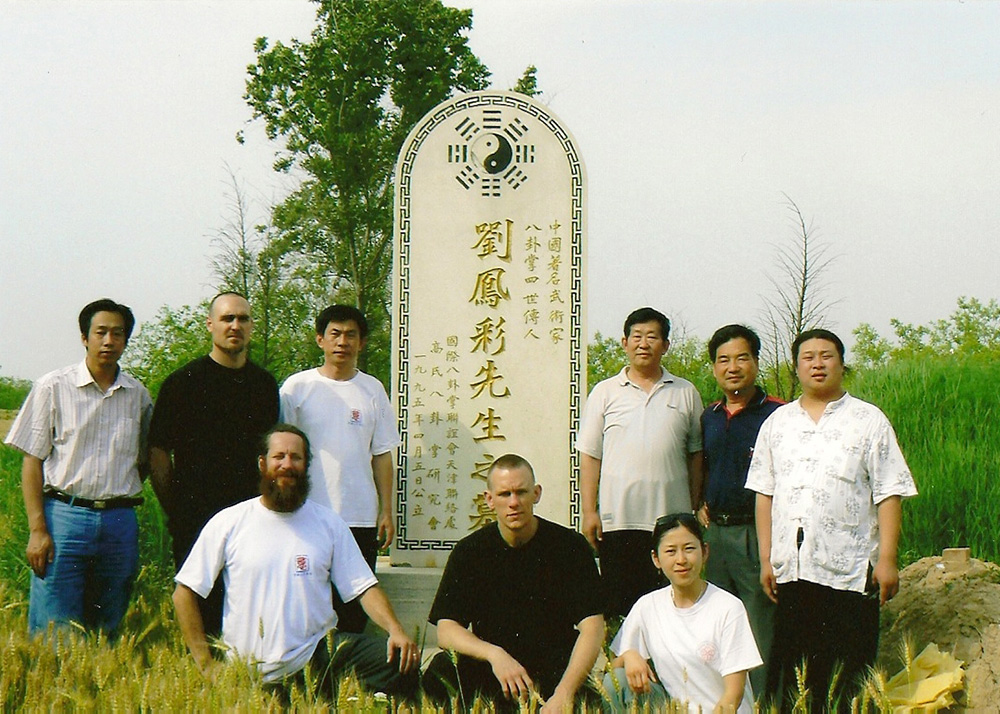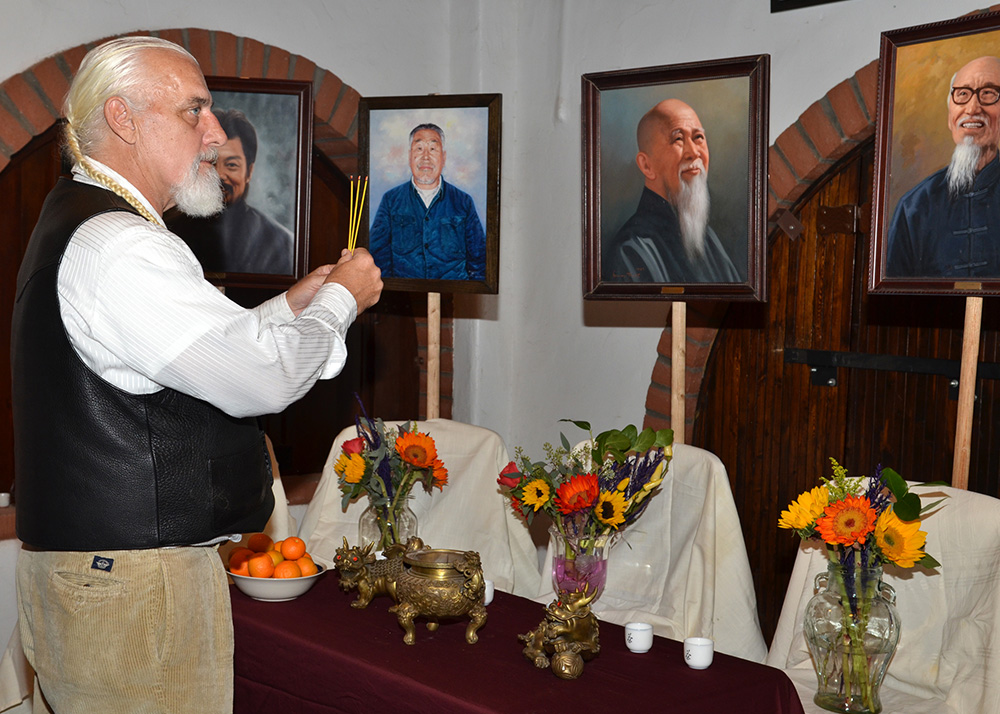The North American Tang Shou Tao Association grew out of the teaching that founder Vince Black did in the mid 1980s when he was attending Chinese medicine college. While in school, he put his own classes on hiatus to concentrate on studying. Instead of teaching locally, he wound up traveling around the country, teaching xingyi quan at various martial arts schools during his study breaks. According to his own estimation, by the time he graduated there were about a dozen schools scattered around the United States practicing his material. NATSTA was formed to bring these schools together under an umbrella organization with the goal of fostering a wider and stronger community of practitioners.
The association’s initial activities were the first national instructors conference in 1991 and sparring conference in 1992, both of which quickly became annual events and have continued in one form or another until today. These events brought students together from the schools around the country to meet each other and begin a long and slow process of disseminating the information that Vince had accumulated across the association. In 1993, the association’s newsletter was first published and has continued bi-annually until the present. Soon after, the instructor and assistant instructor certification process was initiated recognizing people’s ability to teach in their own schools with the association’s official approval.
After these foundations were laid, the association began its journey and has faced many changes and challenges.

